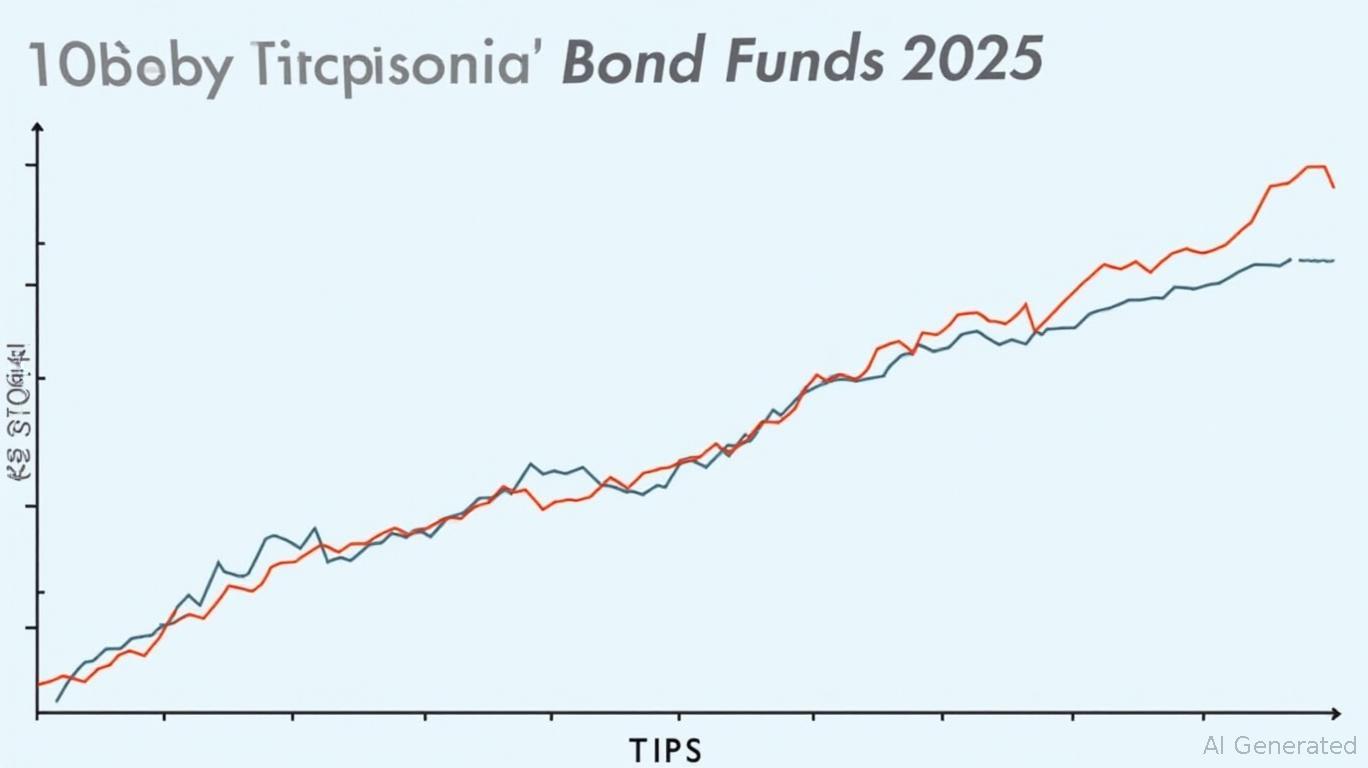Navigating the Crossroads: Rebalance Now for Inflation Risks and a Slowing Consumer
The U.S. economy stands at a crossroads. Consumer spending has stalled, inflation remains stubbornly near the Fed's 2% target, and tariff-driven trade tensions threaten to upend markets. For investors, this is no time for complacency. The confluence of tepid demand, delayed policy impacts, and central bank hesitancy demands a strategic pivot toward inflation-protected assets and defensive sectors while shedding exposure to cyclical industries.

The Tepid Consumer: A Call for Caution
Consumer spending, the lifeblood of the U.S. economy, grew a meager 0.2% in April—the weakest pace since mid-2023—while the savings rate surged to 4.9%, its highest in a year. This reflects growing caution, even as incomes rose 0.8%, signaling underlying economic resilience.
The message is clear: consumer discretionary equities face headwinds. Small-cap stocks, often tied to domestic consumption, fell 2.31% in April as businesses brace for tariff-related supply chain disruptions. Meanwhile, President Trump's “reciprocal” tariffs—such as the 145% levy on Chinese goods—have injected uncertainty into trade flows. Investors should reduce exposure to sectors like retail and automotive, where profit margins are squeezed by rising costs and flagging demand.
Inflation: Subdued Now, Risky Ahead
Annual PCE inflation dipped to 2.1% in April, with core inflation (excluding food/energy) at 2.5%. The CPI, however, tells a different story: shelter costs alone contributed over half of April's 0.2% monthly rise, while energy prices climbed 0.7%. With the Fed clinging to data dependence and refusing rate cuts despite political pressure, inflation risks remain asymmetric.
Breakeven rates—the market's inflation expectation embedded in TIPS—highlight this tension. The five-year breakeven rate rose to 2.59% in May, up from 2.3% in late 2024, reflecting fears of short-term stagflation. For investors, this is a buy signal for TIPS.
TIPS: The Inflation Hedge Outperforming
Treasury Inflation-Protected Securities (TIPS) have soared in 2025, with funds like the Vanguard Inflation-Protected Securities Fund (VIPIX) delivering 3.4% returns year-to-date—outpacing intermediate core bonds (2.7%) and high-yield debt (1.8%).
Why now? TIPS' principal adjusts with the CPI, shielding investors from inflation surprises. Their average maturity of over seven years also benefits from falling long-term yields. As tariff-driven supply bottlenecks risk pushing up prices, TIPS are a must-have hedge.
Commodities: Gold Shines, Copper's Future Is Bright
Gold hit a record $3,500/oz in April, with the S&P
Metals Index up 4.8%. Investors are rotating into gold miners and platinum/palladium to diversify, betting on prolonged inflation fears.Meanwhile, industrial commodities like copper and lithium are poised for long-term gains. Copper's supply constraints and lithium's role in EV production—coupled with infrastructure spending—are structural tailwinds.
Energy commodities, however, lagged as OPEC+ boosted production, but selective exposure to refining and renewables remains prudent.
Defensive Fortresses: Utilities and Staples
Defensive sectors are the bedrock of stability in turbulent markets. Utilities in Europe and the U.K.—such as water infrastructure firms—benefited from regulatory tailwinds and fiscal stimulus. In the U.S., consumer staples and pharmaceuticals with strong balance sheets are buy candidates, offering insulation from trade shocks.
Healthcare's 3.7% April decline masks opportunities in pharmaceuticals, where pricing power and stable demand prevail.
Avoid the Discretionary Trap
Consumer discretionary stocks are vulnerable. The sector's Q1 2025 underperformance—driven by tariff-linked profit warnings and weak U.S. GDP growth—warns against overexposure. Even China's consumer rebound, fueled by stimulus, cannot offset broader U.S. headwinds.
Liquidity and Diversification: The Safest Play
With trade policy volatility peaking, liquidity is non-negotiable. Keep 10–15% of portfolios in cash or short-term Treasuries. Diversify geographically: European equities (up due to fiscal stimulus) and emerging markets (Asia/Latin America) offer value.
Conclusion: Act Now—Rebalance for Uncertainty
The slowdown in consumer spending and inflation's dual-edged risks demand decisive action. Shift capital to TIPS, gold, and defensive sectors, while trimming cyclical exposures. This strategy balances inflation protection with downside defense.
History shows that markets reward proactive investors. With tariffs and Fed policy still in play, there's no time to wait. Rebalance now—before uncertainty becomes crisis.

Comments
No comments yet